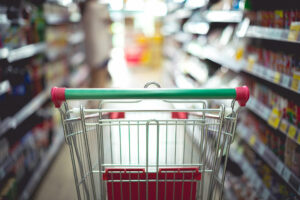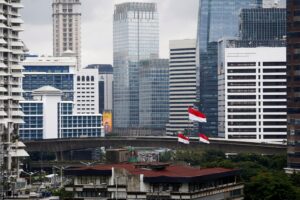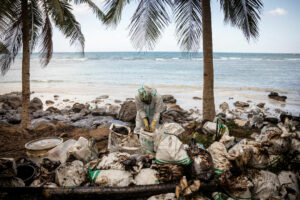For Malaysia, this is no game of chicken

TO GET A HANDLE on the forces disrupting the global food supply chain, a small chicken processing plant on the outskirts of Malaysia’s biggest metro area isn’t a bad place to start. There, it’s clear that getting produce from point to point isn’t just a logistics challenge but a matter of national pride.
Malaysian curbs on poultry exports are grinding into their fourth week. Singapore is a big customer and buys about 98% of live shipments. While some types of chicken are now allowed to make their way to the country’s southern neighbor, the commercial broiling birds that comprise the bulk of sales remain blocked.
Yani Hardinata, who runs marketing and branding at Safina Food Sdn. Bhd, recognizes some of the same problems as his global peers: a surge in inflation that’s driving fertilizer costs, exacerbated by Russia’s invasion of Ukraine, and a chronic shortage of labor. Then there’s the longstanding, bungled domestic price ceilings imposed by the Malaysian government, which discouraged production because the squeeze from higher costs couldn’t be offset by raising prices.
But there’s another element that has emerged from the recent vulnerabilities. Yani makes no apology for championing a version of what might be called “Malaysia First” nutrition. Chickens dismembered, packed, and chilled at Safina proudly bear the logo of a fluttering flag with a Malay sentence that translates as, “Towards Malaysian Food Sovereignty.” “Whatever we can produce here, the raw materials, the supply chain, should be local instead of having to depend on uncertain situations outside of our country,” he told me. “If it can be secured here, procured here, it should be as part of the sovereignty of our food supply chain.”
Similar sentiments were expressed by people up and down the food supply chain in Malaysia during a trip last week — from vegetable wholesalers in Kuala Lumpur to farmers in the lush Cameron Highlands and fisheries of Penang on the country’s northwest coast. While the chicken saga has unique characteristics, not least of which is Singapore’s extreme dependence, the country isn’t the first to engage in food protectionism. India has moved to restrict sugar exports after barring wheat sales. Indonesia halted, then revived, exports of palm oil.
The proximity of a national election, due early next year, has made local politicians jumpier about disgruntled devotees of chicken curry and satay. (As in Singapore, chicken is a meat protein that can be enjoyed by the three main communities: Malays, ethnic Chinese, and South Indians. Muslims, the dominant religious group in Malaysia, can’t eat pork.) But such food nationalism is likely to be a feature of the political and economic landscape for some time — with potentially dire consequences. Escalating food prices account for about one third of the increase in inflation in emerging markets, according to Capital Economics. In advanced economies, the figure closer to a quarter.
The consequences go beyond rising interest rates and stretched paychecks. “The war in Ukraine has also raised questions around food and energy security that may ultimately cause governments to diversify supplies, as well as mean that food export bans are deployed more frequently as countries strive for self-sufficiency,” Neil Shearing, group chief economist at Capital Economics, wrote in a recent note. “The legacy of the latest commodity shock will play out over years, not months.”
Policy and politics are likely to respond to climbing food costs. In Malaysia, putting kitchen table concerns over Singaporeans’ demand for chicken rice no doubt will play well with voters. As well as pushing borrowing costs upward, governments across Asia will be tempted to use fiscal policy to cushion the blow to household budgets from accelerating food inflation. Singapore, Hong Kong, the Philippines, and South Korea will be most affected because they are big importers of food, according to a report from Nomura Holdings Plc.
A trip to the Cold Storage supermarket in the basement of the Kuala Lumpur City Center, the sprawling development that boasts the iconic spires of the Petronas Towers, was instructive. The fresh poultry racks were full one morning last week. Plastic signs plonked in chicken breasts and thighs made clear they were products of Malaysia. I’m bracing for bigger signs, with flags, in a greater variety of foods next visit.
BLOOMBERG OPINION




